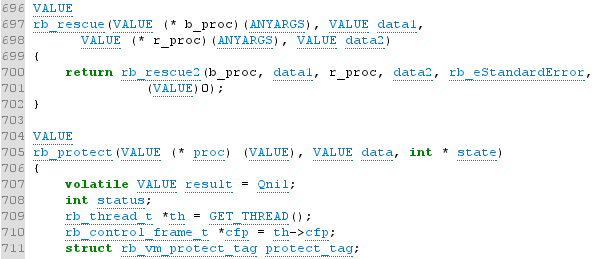Ruby Cross Reference

Ruby, as you know, just looks, but it works hard. This applies particularly to the official interpreter, Ruby MRI: documentation for many implementation details, for example, bytecode or GC, is missing even in Japanese.
I tried to simplify code research by opening the Ruby Cross Reference website based on LXR . In addition to MRI, JRuby and Rubinius are also indexed.
So, what can you do with it:
- View source code . Much more convenient than downloading and unpacking the archive; In addition, RXR allows you to quickly switch between different versions of the same implementation.
- Search for identifiers . To build an index, use ctags , which distinguishes the prototype declaration from the implementation or macro. In addition, basic Ruby support has been added to this version of LXR.
- Search in full-text index . The search for identifiers is obviously case sensitive and does not check for substrings. Full-text search perfectly complements it.
All source code is updated and reindexed every night.
')
Currently, three versions of MRI are known RXR - 1.8.7 , 1.9.2 and HEAD ; for JRuby and Rubinius only HEAD is presented.
Source: https://habr.com/ru/post/117448/
All Articles